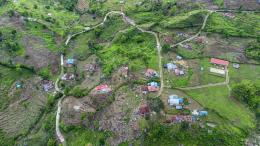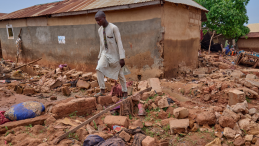Central Viet Nam is characterized by rapid urbanization, particularly in small and medium-sized coastal cities. At the same time, the region is facing an increase in precipitation and heavy rainfall events, which, combined with land use changes, result in more frequent and intense flooding. In this context, the overall aim of the FloodAdaptVN project is to analyze and ultimately reduce present-day and future flood risks for people, livelihoods and assets in highly flood prone urban regions of Central Vietnam using the city of Hué and its hinterland as a case study. More specifically, the project aims at (1) better understanding and drivers, hotspots and dynamics of present-day and future flood risks, (2) investigating both, entry points for and barriers to the implementation of (ecosystem-based) solutions for flood risk reduction, risk transfer, and adaptation solutions, and (3) developing a decision support tool for prioritizing among different risk reduction and adaptation measures based on their impact reduction, social acceptance, long-term sustainability and cost-efficiency. FloodAdaptVN is funded by the German Federal Ministry for Education and Research (BMBF) as part of the funding initiative “Sustainable development of urban regions”.
The FloodAdaptVN consortium is composed of seven German and five Vietnamese partners, representing science, business, and governmental organizations. Next to UNU-EHS, German partners are the German Aerospace Center (DLR), which leads the project, the Eberhard Karls Universität Tuebingen, the Ludwig-Maximilians-Universität München, the Munich Climate Insurance Initiative (MCII), the IZES gGmbH, the GEOMER GmbH. Vietnamese partners include Huế University, Huế University of Sciences, the People's Committee of Huế City (PC), the Department of Natural Resources and Environment (DONRE), and the Ministry of Natural Resources and Environment (MONRE) - Department of Meteorology, Hydrology and Climate Change.
Following a successful pre-phase of 6 months, FloodAdaptVN has gone through a definition phase of 21 months (08/2019 – 03/2021), in which the initial approach is co-developed, tested, and refined with local partners and stakeholders. The outcomes and experiences of the definition phase have been used to co-design the subsequent 48-month research & development (R&D) phase which has offiially started in April 2021.
UNU-EHS contributes to the project with three of its sections (i.e. VARMAP, EVES and MCII). In the 48-month R&D phase UNU-EHS will lead the assessment of flood risks and the work package on risk reduction, risk transfer and adaptation solutions. Additionally, UNU-EHS contributes to the development of future risk scenarios, planned capacity building, knowledge transfer, and dissemination activities in the project, as well as to the mainstreaming of project outcomes into planning and policy frameworks and processes in the region.




